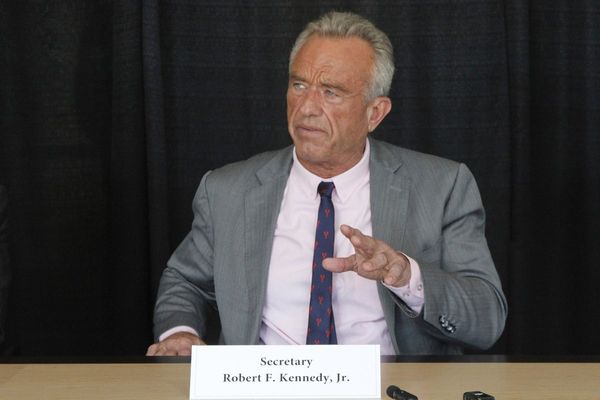
The tabletop mountains in Venezuela are sheltered, otherworldly ecosystems. Standing up to 3,000 metres (10,000ft) high and cut off from the rest of the world by their steep cliffs, much of the flora and fauna on the sandstone plateaux has evolved in isolation and is found nowhere else on Earth.
“Visiting a tepui feels a lot like stepping on another planet,” says Margarita Lampo, an ecologist at the Venezuelan Institute for Scientific Research (IVIC). “It’s a really unique place, with all these strangely shaped black rocks and unique vegetation. You see all these things you’ve never seen before.”
There are more than 50 tepuis in Venezuela. Translated as “house of the gods” in the language of the Indigenous Pemon people, each is its own pristine, ecological island formed over millions of years. The mountains inspired Arthur Conan-Doyle’s 1912 fantasy The Lost World, in which explorers discover a primeval refuge of dinosaurs and other evolutionary oddities.
The tepuis are indeed home to some of the world’s rarest and strangest creatures: toads that roll into balls instead of hopping, frogs that dwell in carnivorous plants, and amphibians only ever seen by a few people.

High in the sky, their inaccessibility had shielded the creatures from human contact and the biggest threats to regional wildlife, including an explosion of illegal mining in Venezuela’s rainforests and a lethal fungus decimating amphibian populations across Latin America.
Now, the very isolation that has protected these remote ecosystems from harm could undermine their survival.
“To adapt to climate change, animals and plants across the world are slowly climbing up altitudes as temperatures rise. But for the frogs on the tepuis, there is no up for them to go to,” Lampo says.
Amphibians are the world’s most endangered vertebrates and are increasingly being pushed towards extinction, a global study published in Nature this month found. Climate breakdown has replaced deforestation as the biggest threat to amphibians, with almost 41% of the world’s frogs, toads, salamanders and newts at risk of disappearing.
Jennifer Swandby, manager of species partnerships at Re:wild and a contributor to the IUCN Global Amphibian Assessment, said: “There is a growing proportion of species being pushed to the brink of extinction by disease and climate change. Habitat protection alone cannot protect [them].”

Amphibians are more vulnerable to extinction than mammals, reptiles and birds, researchers concluded. Their cold-bloodedness makes them more susceptible to temperature change, and the porous skin of salamanders, frogs and newts leaves them highly sensitive to pollution or small swings in temperature and humidity.
And few amphibian species are as vulnerable to climbing global temperatures as those that inhabit the tepuis. Of the 49 Venezuelan amphibians at greatest risk of extinction from the climate crisis, 44 live on the tabletop mountains, also known as mesas, the Global Amphibian Assessment found.
The isolated and inhospitable ecosystems of the tepuis have forced animals to evolve in strange ways to survive on the rocky plateaux and mossy walls.
The tiny pebble toad (Oreophrynella nigra) cannot hop but can tuck its head in and roll away from predators in a ball resembling one of the plateaus’ tiny black pebbles. The Oreophrynella macconnelli, found on the slopes of the Roraima Tepui, is small enough to drop safely from the tree canopy to the forest floors to evade predators.
Many of these species are found only on a single tepui, giving them some of the smallest geographic distributions for any vertebrates in the world. But their rare evolutionary conditions also make them highly vulnerable.
Tepuis are rocky, desert-like landscapes. With little soil to draw moisture and nutrients from, many of the plants are carnivorous and live off insects. A number of frog species live inside those plants, relying on the moisture they hold and the insects they lure in to survive.

Distribution models estimate that if local temperatures increase by the expected 2-4C (3.6-7.2F) predicted for 2100, up to a third of plant species on the tepuis could be wiped out – and other animals that depend on them may disappear too.
“When you have species with a very restricted distribution, the risk of extinction is very, very high,” says Lampo, who worked on the Venezuelan chapter of the Global Amphibian report.
Compounding the pressures of the climate crisis, the isolation of the tabletop mountains is no longer sufficient to shield the animals from human contact.
Last year, satellite image analysis by the Amazon monitoring organisation Maap revealed a mine on Yapacana tepui, as an illegal gold mining boom sweeps across the Venezuelan Amazon.

Despite being more vulnerable to extinction than birds and mammals, far less is being done to protect amphibians, the Global Amphibian Assessment concluded.
Saving the amphibians of the tepui will be particularly challenging, as so little is known about them, Lampo says. Researchers can only get the funds and permits to travel deep into the Amazon and up the tepuis on a helicopter every few years.
Options being considered to save the animals range from relocation to breeding them in a lab, but there is no consensus, Lampo says. The most urgent measure is to freeze samples of the frogs in case, one day, science can bring them back to life.
“We know so little about these animals and we might lose them before we ever get the chance to,” she says.
“The most tragic thing about losing these frogs is not just that they are unique and beautiful. It would be like setting fire to a library full of books that exist nowhere else and that no one has ever read.”







